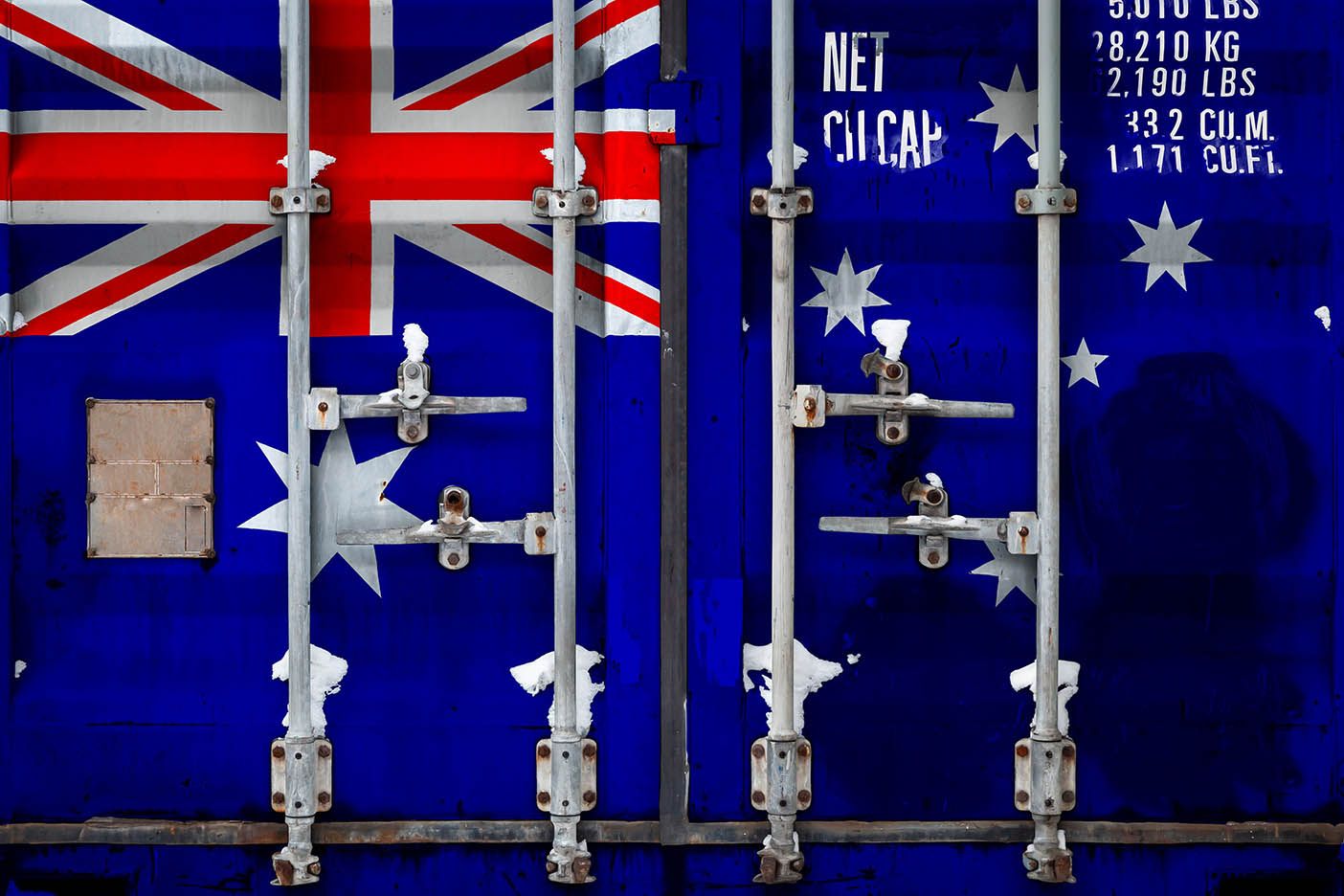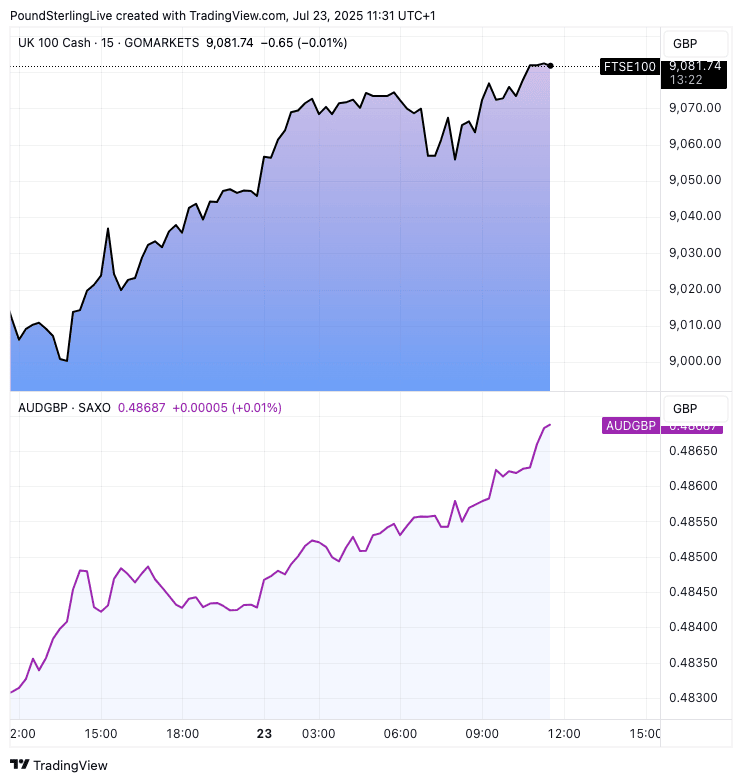- Pound-to-Australian Dollar down 0.5% at 2.0548
- Euro-to-Australian Dollar down 0.70% at 1.7807
- Australian Dollar-to-U.S. Dollar up 0.50% at 0.6588

Image © Adobe Images
AUD is leading the pack through the midweek session on news the U.S. and Japan reached a deal that would include a 15% reciprocal tariff rate imposed by the U.S. on Japanese imports.
This is lower than the 25% in Trump's recent letter to Japan, which is welcome relief to some of the world's biggest manufacturers that reside in Japan. Japan will also invest $550 billion in U.S. projects and make it easier for the U.S. to export cars, trucks, rice and other agricultural products.
Beyond Japan's borders, the agreement further lowers overall trade uncertainty.
"Trade 'War Pigs' silenced," says Elias Haddad, Senior Markets Strategist at Brown Brothers Harriman. "Diminishing trade policy uncertainty is supporting risk assets. Cyclical-sensitive currencies are outperforming while global equity markets are rallying."
"The Australian dollar is what is known as a 'pro cyclical and risk-sensitive currency' because we are exposed to global trade through our large commodity export sector. This means that in times of positive global growth and sentiment, the Aussie dollar tends to appreciate," says Diana Mousina at AMP in Sydney.
"For global markets, the trade deal news has been the most significant, as it's raised hopes that the U.S. might be about to reach deals with other countries that avoid the higher tariffs on August 1," says Henry Allen, a strategist at Deutsche Bank.
Additional tailwinds for the Aussie Dollar came on rising hopes that the U.S. and China, a country to which Australia is particularly exposed, will build on their recently agreed trade framework in fresh negotiations, due next week.
"Reports that the U.S. and China are also making good progress, another round of negotiations is planned in Stockholm next week, would be another fillip for global growth and risk sentiment including equities, commodities and higher beta currencies," says Kenneth Broux, a strategist at Société Générale.

The above chart shows the rise in the FTSE 100 and the AUD/GBP. It suggests that the rise in global equities is helping the AUD move higher against the GBP.
Global equities rallied, led by a sharp 3.5% surge in Japan's Nikkei 225 after the trade deal slashed auto tariffs, lifting major exporters like Toyota and Mazda. Broader gains across Asia followed, with upbeat sentiment also pushing Singapore’s Straits Times Index to a record high.
In Europe, the Euro STOXX 600 rose 1.1% and the FTSE 100 hit an all-time high of 9,066.31, buoyed by the trade optimism and anticipation of U.S.–EU negotiations.
Meanwhile, U.S. markets traded near record highs, with the S&P 500 flat and Nasdaq slightly softer, as investors awaited inflation data amid fading haven demand.
The backdrop is relatively supportive of the Dollar which has been battered by negative trade headlines all year; understandably, resolution to the issue will assist it.
However, it, and other majors such as the Euro and Pound, are struggling against those currencies that are highly leveraged to growing investor optimism.
The U.S. Dollar "is extending its slide against the risk-linked Australian, New Zealand and Canadian dollars. This suggests an improving risk appetite and may be the result of a trade deal between the US and Japan," says Charalampos Pissouros, Senior Market Analyst at Trading Point.
Risks to this trade include a messy outcome in EU and U.S. trade negotiations, with France and Germany said to be keen to maintain a hard line on the U.S.
However, history says the two sides will reach an agreement and the contours of the Japan deal show how this is possible.
The Australian Dollar is set to advance further if this is the case.
